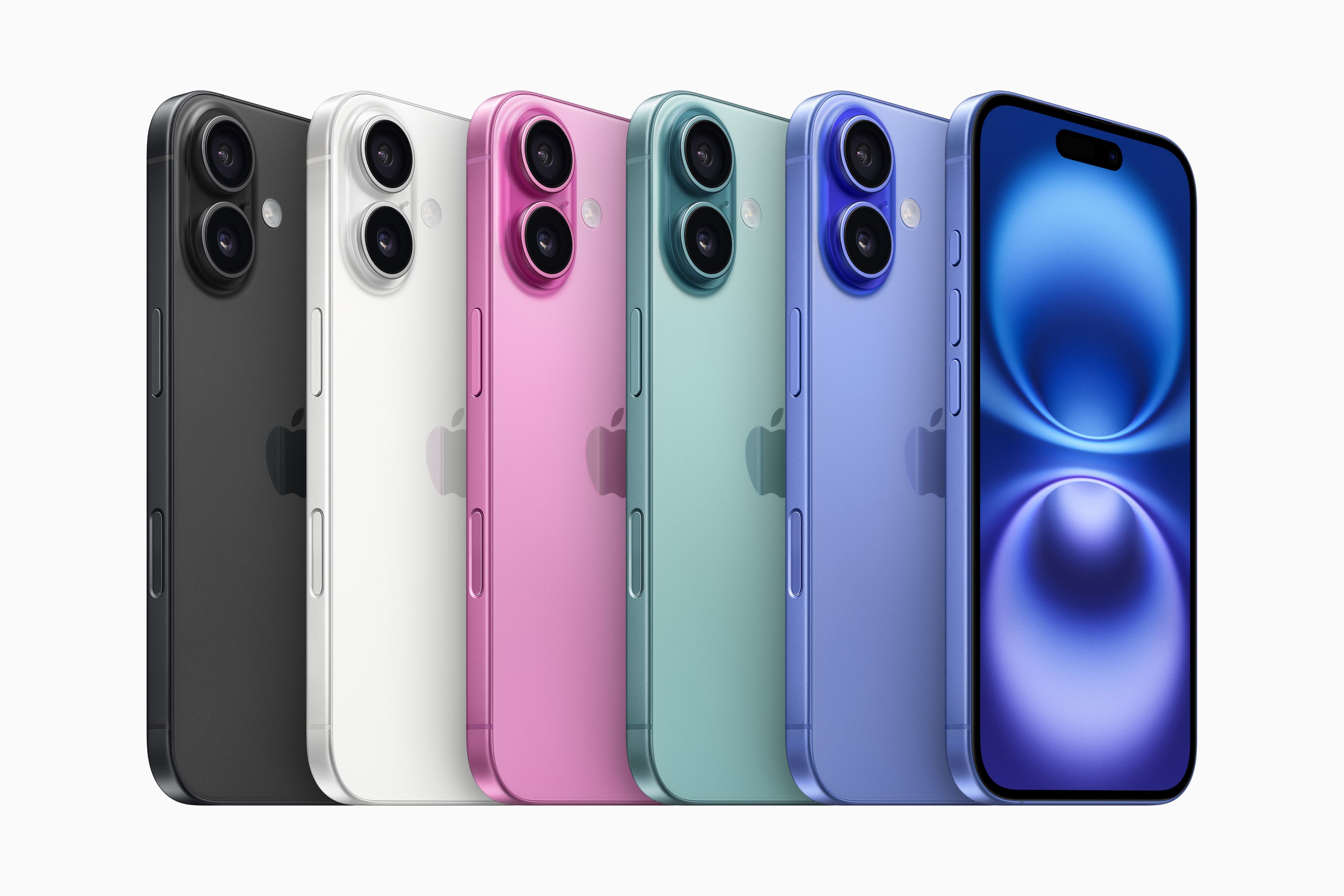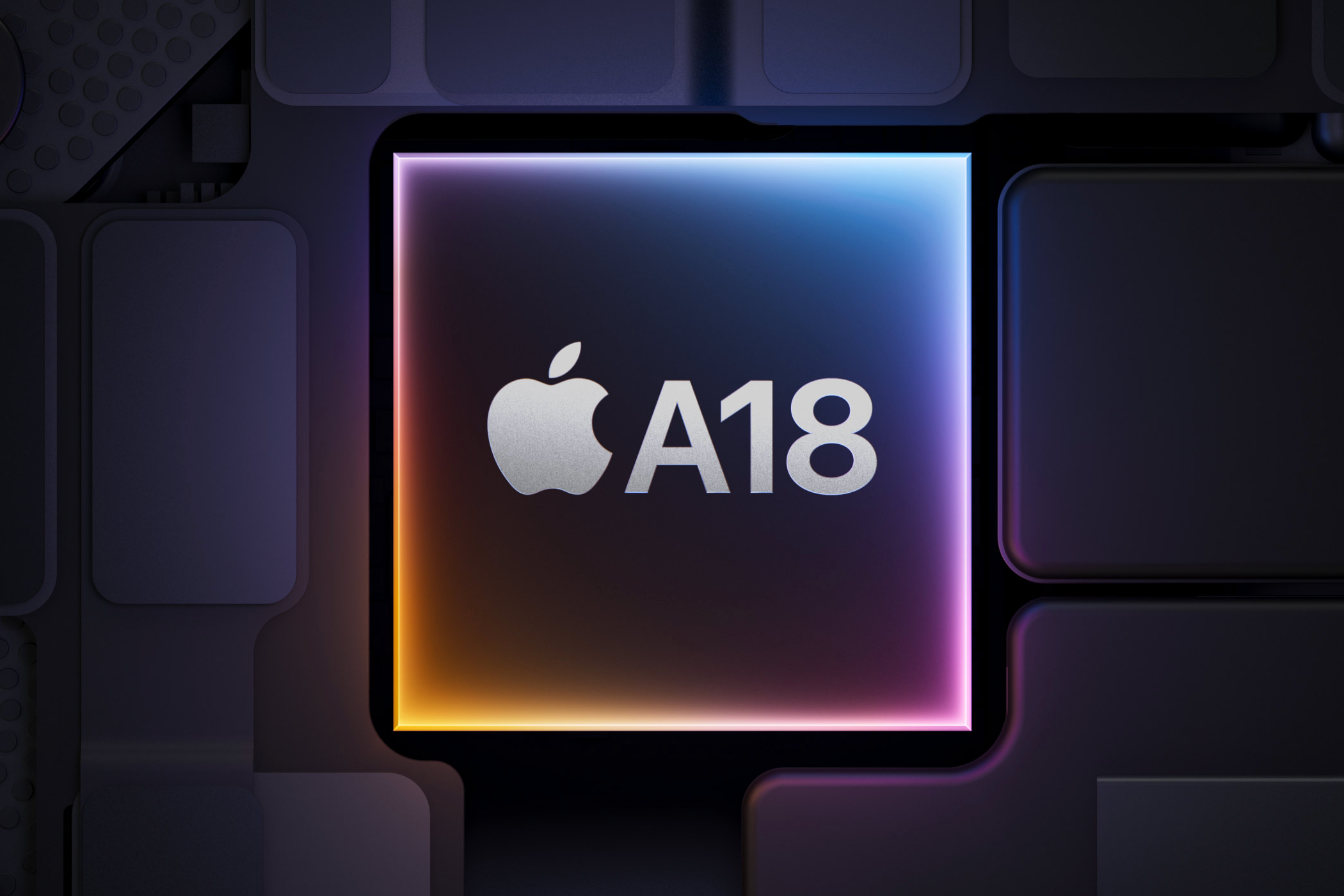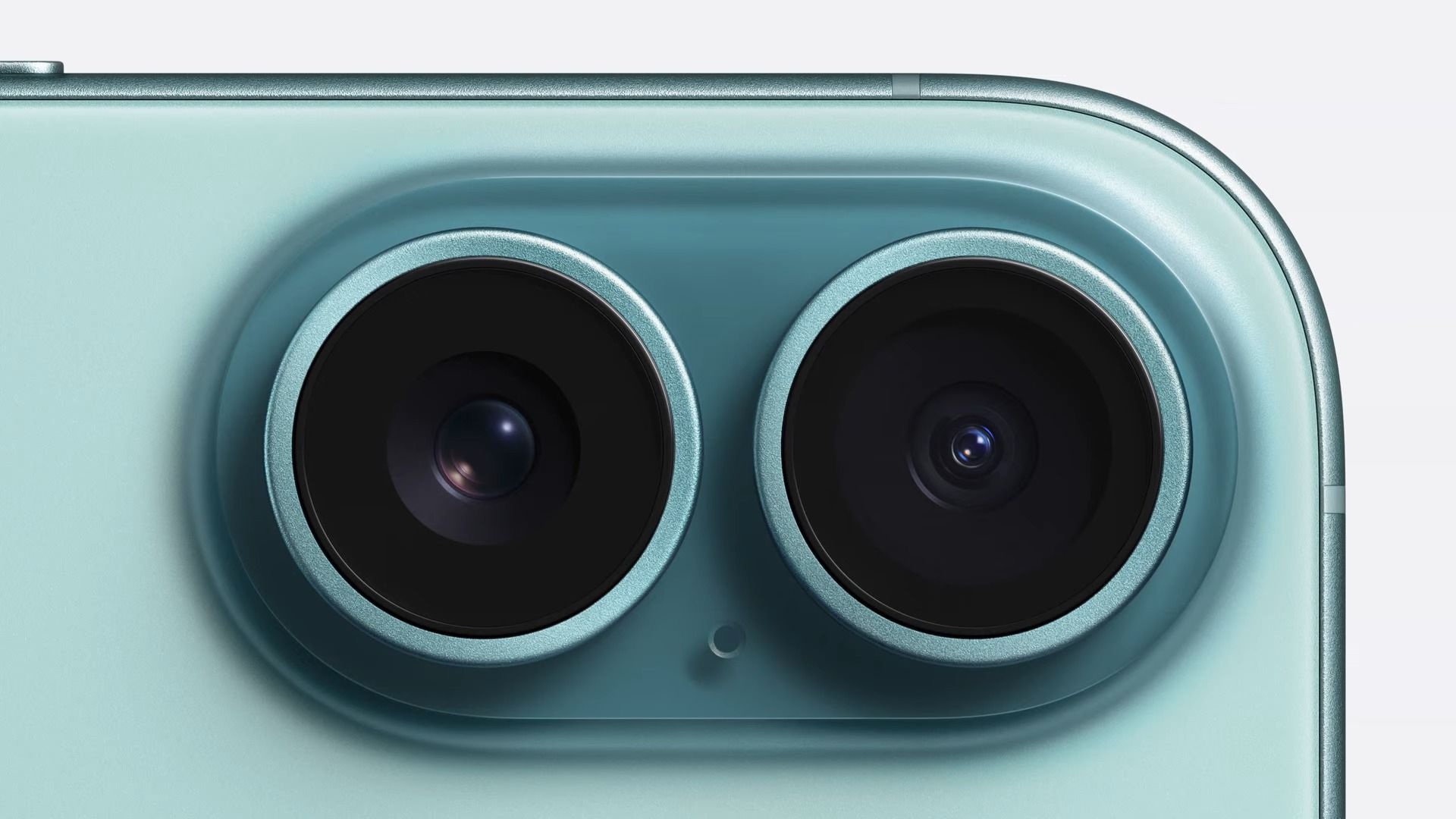iPhone 16 vs. iPhone 15: What Difference Does a Year Make?
Apple
Quick Links
-
Say Goodbye to the Diagonal Camera Placement
-
Size, Weight, and Display Remain Unchanged
-
The iPhone 16 Gets a New A18 Chip
-
Camera Control Is the Other Big New Feature
-
Use 25W MagSafe Charging With the iPhone 16
-
The iPhone 16 Supports Apple Intelligence
-
The Price Remains the Same
Key Takeaways
- iPhone 16 has new Camera Control and Action buttons, an improved A18 chip, much faster wireless charging, and a better ultrawide camera for Apple’s usual $799 launch price.
- Apple Intelligence is another big feature this year, with the iPhone 16 capable of using Apple’s generative AI features and a smarter Siri (something the iPhone 15 cannot do).
- The iPhone 15 shares many similarities with the iPhone 16 in terms of display, size, weight, and overall feature set and is now available starting at $699.
Should you upgrade from the iPhone 15 to the iPhone 16? There are a few big changes that might entice you to do so and plenty of similarities that might convince you to save your money instead. Here’s what you need to know.
Say Goodbye to the Diagonal Camera Placement
The iPhone 16 comes with a vertically arranged camera module, a significant shift from the diagonally arranged camera modules on the recent iPhones. While it gives the handset a new look, loyal iPhone users know that the design resembles the iPhone X that came out in 2018. It makes shooting spatial photos and videos possible, which adds a stereographic 3D effect for viewing on Apple Vision Pro and similar headsets.
The iPhone 16 also features the Action Button introduced with the iPhone 15 Pro models in place of a mute toggle switch. There’s also a new Camera Control button on the same side as the power button (more on that later). You can choose from five colors (Ultramarine, Teal, Pink, White, and Black), with more saturated hues when compared to those of the iPhone 15.
The vanilla iPhone 15 has the iconic square-shaped camera cutout that houses two camera sensors placed diagonally. For years, the camera module became a mascot for the lineup. The handset also features color-infused back glass panels in five colors: Black, Blue, Green, Yellow, and Pink. However, besides the shape of the camera module and the colors, the iPhone 16 and iPhone 15 share many commonalities.
For instance, both models share dimensions, which means that, in theory, you should be able to slap an iPhone 15 case on the iPhone 16 (but you shouldn’t, because that would cover the new Camera Control and Action button). There isn’t much difference in the handset’s weight either, with the iPhone 16 weighing just a gram less than the outgoing model. Both phones have an aluminum frame, an IP68 dust and water resistance rating, and the Dynamic Island.
The only other difference is the second-generation Ceramic Shield front glass on the iPhone 16, which is “50% tougher than the first generation.”
Size, Weight, and Display Remain Unchanged
Apple didn’t make any changes to the iPhone 16’s display: it’s essentially the same 6.1-inch panel as the iPhone 15. Both are based on the same OLED technology, offer identical resolution, and are equally bright as each other. It’s a tad disappointing to see Apple sticking with a 60Hz refresh rate on the regular iPhones, as these are the models competing against the vanilla Galaxy S24 (or the Galaxy S25 when it comes out in 2025) and the Pixel 9, both of which support a 120Hz refresh rate.
That doesn’t mean that the iPhone screens don’t appear crisp, detailed, and bright enough under direct sunlight; it’s just the enthusiast in me wanting to see a 120Hz screen on a vanilla iPhone (something I tried to manifest when naming five essential upgrades that the iPhone 16 should come with).
The iPhone 16 Gets a New A18 Chip
With the iPhone 16, Apple introduces the new A18 system-on-a-chip, which features a six-core CPU that is 30% faster and a five-core GPU that is up to 40% faster than the outgoing A16 Bionic. The processor also features an upgraded 16-core Neural Engine that can run machine learning models up to two times faster than the one on the A16 Bionic chip. Featuring the second-generation 3nm technology, the A18 Silicon is also more efficient than the A16 Bionic which means it uses less power while achieving better performance.
The iPhone 16 is ready to tackle AAA games with demanding graphics (thanks to hardware-accelerated ray tracing), can render 4K videos faster, and, most importantly, has enough horsepower to run the suite of generative AI features Apple likes to call Apple Intelligence. The newer model also sports a heat dissipation mechanism that delivers up to 30% higher sustained performance.
That is not to say that the iPhone 15 isn’t a capable smartphone. In fact, the A16 Bionic is still among the most powerful chips on a smartphone, still offering excellent performance compared to the competition.
Camera Control Is the Other Big New Feature
This year, Apple has rebranded the 48MP primary camera on the iPhone 15 and is calling it the 48MP Fusion camera on the iPhone 16, even though both the sensors share the exact same resolution and stabilization, and the lenses use the same aperture and autofocus technology. Since the sensors have a higher resolution, the iPhones can focus on the central 12MP portion and provide equivalent results to a dedicated 2x telephoto lens.
The iPhone 16’s 12MP ultrawide camera, however, has a slightly bigger aperture on the iPhone 16 for better low-light performance. Furthermore, it also gains autofocus for capturing macro photographs, something the iPhone 15 can’t do. On the front, both phones have the same 12MP TrueDepth camera.
The main highlight of the iPhone 16’s camera system is not the camera hardware but the Camera Control button, which is also present on the iPhone 16 Pro models. This new button on the side of the phone makes it easier to quickly launch the camera and capture photographs.
Apple has designed the button to detect the difference between a soft and a hard click, with upcoming features that will also let it act like a two-stage shutter button on professional cameras. It can also recognize touch inputs, so you can slide over the button to zoom in or out of a screen and switch between different Camera app features.
The software-based improvements include new Photographic Styles on the iPhone 16, which provide more tones and mood-based presets than ever before. Another improvement that Apple didn’t announce during the event is the ability to record QuickTake videos in a higher resolution (4K at 60 fps) with the iPhone 16, which is a significant upgrade from the iPhone 15 (1080p at 30 fps). The latest iPhone is also able to record better-quality audio.
As previously mentioned, the iPhone 16 can record spatial photos and videos for viewing on the Apple Vision Pro. Other features, such as Dolby Vision recording in 4K at up to 60 fps, Cinematic Mode, and Action Mode, work the same on both iPhones.
Use 25W MagSafe Charging With the iPhone 16
The iPhone 16 can provide up to 22 hours of video playback on a full charge, which is two hours (or 10%) more than what the iPhone 15 is rated for. However, that isn’t as big a change as the support for faster MagSafe charging (25W) on the iPhone 16. In other words, the iPhone 16’s wireless charging rate is similar to the iPhone 15’s wired charging rate, a major quality-of-life improvement that iPhone users who love wireless charging will appreciate.
It is important to mention that 25W wireless charging on the iPhone 16 requires a 30W (or higher) adapter and a compatible MagSafe charger.
The iPhone 16 Supports Apple Intelligence
While both the iPhone 16 and the iPhone 15 will get the iOS 18 update on September 16, 2024, only the iPhone 16 will receive the new Apple Intelligence features. The additional horsepower and a more capable Neural Engine on the iPhone 16 are necessary to run large language models locally on the device.
This includes features like text generation, proofreading, image generation, a smarter and more context-aware Siri, and summarized notifications.
The iPhone 16 will also offer Visual Intelligence. This visual lookup feature is activated using the Camera Control button and gives users more information about the object in the frame. Point it at a shop, a hotel, an item, or someone’s pet, and Visual Intelligence will provide you with additional information.
The Price Remains the Same
The iPhone 16 costs $799 for the baseline model with 128GB of storage, which is the same as the iPhone 15’s launch price. The newer model will be available for pre-order on September 13 and hit stores on September 20.
Like every year, Apple has discounted the iPhone 15 by $100, reducing its retail price to $699 for the variant with 128GB of storage. Further, there’s a good chance that you can find the iPhone 15 at a higher discount in upcoming sales on third-party e-commerce platforms.
|
iPhone 16 |
iPhone 16 Plus |
iPhone 15 |
iPhone 15 Plus |
|
|
128GB |
$799 |
$899 |
$699 |
$799 |
|
256GB |
$899 |
$999 |
$799 |
$899 |
|
512GB |
$1,099 |
$1,199 |
$999 |
$1,099 |
The iPhone 16 offers a multipurpose Action Button, a useful Camera Control button, a more powerful and efficient A18 processor, and faster wireless charging. Further, it also supports Apple Intelligence, which happens to be the company’s biggest best against its competition.
Leaving the GenAI features aside, there’s no groundbreaking feature or innovation that you’d miss by sticking to your iPhone 15. Find out more about whether the iPhone 16 update is worth it for you.
-

Apple iPhone 16
Apple’s newest iPhone featuring a camera button, programmable action button, and artificial intelligence features.
See at Apple -

Apple iPhone 15
The iPhone 15 and iPhone 15 Plus bring most of the features from the 14 Pro to a more affordable price point, and finally ditch Lightning for a USB Type-C connector.
See at AppleSee at Best BuySee at AT&TSee at VerizonSee at T-MobileSee at WalmartSee at TargetSee at Xfinity Mobile
























